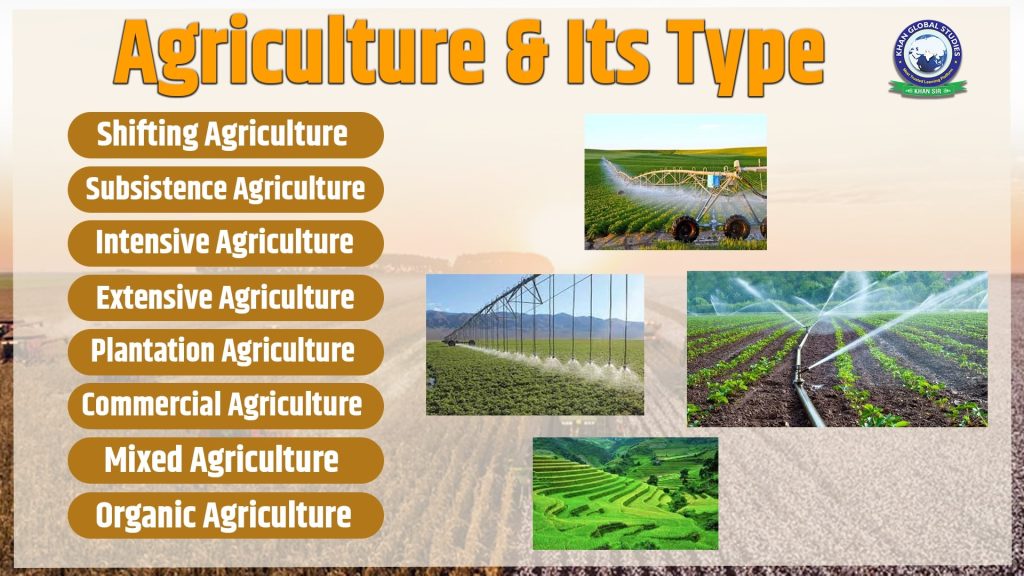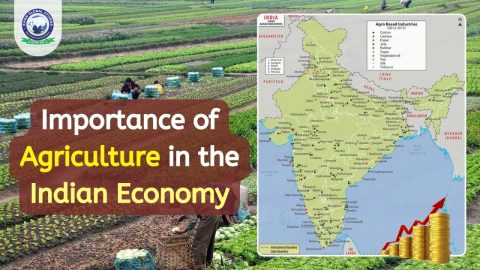
Agriculture, or farming, is the simplification of nature’s food web and the recycling of energy for human planting and animal consumption. Generally, farming involves redirecting the natural flow of nature’s food web. The natural flow of the food web is that the Sun provides light to the plants.
- Plants convert sunlight into sugars that provide food for the plants (a process called Photosynthesis).
- Plants provide food for herbivorous animals (plant-eating animals, i.e., sloths) and herbivorous animals provide food for carnivorous animals (meat-eating animals, i.e., jaguars).
- Decomposers, or bacteria, break down dead plants or animals.
- The nutrients from the plants and animals go back into the soil and the whole process starts a new one.
What is Agriculture?
Agriculture is the art of ploughing fields, growing crops and raising animals. It is a primary activity that involves growing crops, vegetables, fruits, flowers and livestock rearing. Farming is called ‘Agriculture’ in English which is derived from the Latin word “Ager” or “Agri” which means soil and Culture means cultivation.
Types of Agriculture
There are different types of agriculture:
- Shifting Agriculture
- Subsistence Agriculture
- Intensive Agriculture
- Extensive Agriculture
- Plantation Agriculture
- Commercial Agriculture
- Mixed Farming
- Organic Farming
Shifting Agriculture
Shifting cultivation is an agricultural system in which plots of land are temporarily cultivated, then abandoned, in which fallow vegetation is allowed to grow freely after disturbance while the cultivator moves on to another plot. The cultivation period usually ends when the soil shows signs of exhaustion or, more commonly, when the field becomes overgrown with weeds. The period during which the field is cultivated is usually shorter than the period in which the land is allowed to regenerate by remaining fallow.
Subsistence Agriculture
Subsistence agriculture occurs when farmers grow crops on small landholdings to meet their own and their family’s needs. Subsistence farming specialists aim to produce agriculture for survival and mostly for local needs, with little or no surplus. The decision to plant trees is primarily made keeping in mind what the family will need in the coming year, and then taking into account market prices. Tony Waters, a sociology professor, defines “subsistence farmers” as people “who grow what they eat, build their own homes, and make a living without regularly shopping at a market”.
Intensive Farming
Intensive Agriculture is a method of farming in which large amounts of labor and investment are used to increase the yield of the land. In an industrial society, this usually means the use of pesticides, fertilizers, and other chemicals that increase yields, and the acquisition and use of machinery to aid in planting, chemical application, and harvesting.
Extensive Agriculture
Extensive farming is a measure of how much area of land is being exploited, and how much individual input is required to manage that exploitation. For example, extensive farming involves a three-acre farm with five head of cattle that are raised for beef. The farmer needs to maintain the farm’s infrastructure and ensure that the cattle remain healthy, but the labor input is relatively low compared to many other farms: the cows can essentially take care of themselves.
Plantation Agriculture
Plantation agriculture is a form of agriculture in which a single person or company owns a large farm and grows a single crop (often corn, wheat, sunflowers, cotton, etc.). Plantation farming requires capital, modern machinery (especially for seeding and harvesting) and of course personnel.
Commercial Agriculture
Commercial agriculture, otherwise known as agribusiness, is a farming system in which crops are grown and livestock are raised to sell products in the market to make money.
In this type of farming, a lot of capital is invested and crops are grown on large farms on a large scale using modern technologies, machinery, irrigation methods and chemical fertilizers. The basic feature of commercial farming is that modern inputs are used in large quantities for higher productivity, such as high-yielding varieties, fertilizers, pesticides, insecticides, herbicides, etc.
Mixed Farming
Mixed farming is a practice in which multiple agricultural activities besides growing crops take place on the same piece of land. A crop can be grown along with farming activities like livestock rearing, beekeeping, fish farming etc. Its objective is to create as many sources of subsistence as possible. Initially, it mainly catered to domestic consumption; Now, many countries like Japan and the United States practice it for commercial consumption.
In other words, growing crops and raising animals for eggs, meat or milk is called mixed farming. For example, producing wheat or rye and raising cattle, pigs, sheep or poultry simultaneously.
Organic Agriculture
Organic farming, also known as ecological farming or organic farming, is an agricultural system that uses fertilizers of organic origin such as manure, green manure and bone meal and emphasizes techniques such as crop rotation and companion planting. It emphasizes the use of management practices while giving priority to the use of off-farm inputs, keeping in mind that regional conditions require locally adapted systems.





